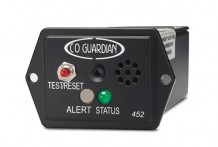


It also features a built-in CO detector that alerts pilots via a loud audio alarm, a flashing red light, and a pop-up alert in the ForeFlight app. More InfoįoreFlight Sentry. This all-in-one ADS-B receiver does more than just receive weather and traffic. It also has a TWA setting for 8 hours, but this is less important unless you're troubleshooting a persistent problem. The default low alarm is set at 35 ppm and the high alarm is set at 100 ppm. You can use the sturdy clip to keep it attached to a seat belt or mount it to the panel so it's in view. The built-in screen gives you a real time indicaton of CO ppm, but it's still small enough to mount almost anywhere. It features three alert modes - a 90 dB audio alarm, flashing red lights, and vibration - so you will notice it in the cockpit (trust us!). Here are three options we have flown with and recommend. They may not alert until CO concentrations reach over 100 ppm, or they may not have an alarm that's audible in the loud cockpit of a general aviation airplane. However, most of them are not well suited for aviation. There are hundreds of CO detectors on the market. Also keep it in your direct line of sight - it doesn't have to be right in front of a vent, but it should be some place where you can see it without having to move your head much. Make sure the batteries are fresh and the sensor is replaced every few years, as directed by the manufacturer.
#ASA HAS RED ALARM LIGHT HOW TO#
For that reason, we like units that alert at 35 or 50 ppm.įlying with a CO detector is only helpful if you know how to use it. Even 35 ppm, which could be caused by poor airflow or even the landing gear being down, can cause confusion, fatigue, and poor decision making if it persists for an hour. But pilots can also be impacted by much lower levels. It's highly likely you have an exhaust leak. Certainly a concentration of 200 ppm should get your attention right away: turn off the heat, open the fresh air vents, and consider landing. In our experience, pilots should err on the side of caution. OSHA uses 200 ppm as a 5-minute sample ceiling, and 1500 ppm as an instantaneous limit. So how much is too much? The US Occupational Safety and Health Administration (OSHA) uses 35 ppm as its lower limit, although it's important to note that this is based on a time weighted average (TWA), taken over 8 hours. All CO detectors measure concentration in parts per million (ppm), and alert pilots with some combination of lights, audio alarms, and even vibration. The easiest thing to do is use a carbon monoxide detector on every flight. If you buy a quality device and make it part of your regular checklist, you're much more likely to detect a leak before it becomes a major problem. Since much of this is hidden with the engine cowl on, have your mechanic do a thorough inspection of all exhaust parts at every oil change and annual, too. Look for any cracks, holes, or hot spots, which might indicate a leak. One way to avoid this scenario is to perform a good preflight inspection every time you fly, paying particular attention to the condition of the exhaust system. It was only because I had a good CO detector that I stayed out of the NTSB reports.
#ASA HAS RED ALARM LIGHT CRACK#
A crack in the exhaust sytem of the helicopter I was flying meant unfiltered exhaust gasses were pouring into the cockpit every time I pulled the cabin heat knob. In fact, I narrowly avoided one myself last year. Worst of all, your brain won't notice anything is wrong - if you don't have some way to monitor CO in the airplane, you might never know it's there. At low levels, that might mean just a headache, but over a long enough period of time or with high enough CO concentrations, that might mean impaired decision-making or even incapacitation. With enough exposure, this can lead to symptoms of hypoxia (anemic hypoxia, specifically).

This is dangerous because CO essentially tricks your blood into bonding with it instead of oxygen, starving your body of what it needs. Unfortunately, a leak in the exhaust system means carbon monoxide (CO), a colorless, odorless, tasteless - and potentially deadly - gas, can enter the cabin. Most light airplane heaters use a shroud around the exhaust to warm ambient air, which is a simple and effective way to keep pilots and passengers warm. Here's what pilots need to know about carbon monoxide: where it comes from, how to prevent it from entering the cockpit, and what tools are available for detecting it. Cold weather can mean better airplane performance and some beautiful winter sunrises, but it can also mean potential danger from the airplane's heating system.


 0 kommentar(er)
0 kommentar(er)
